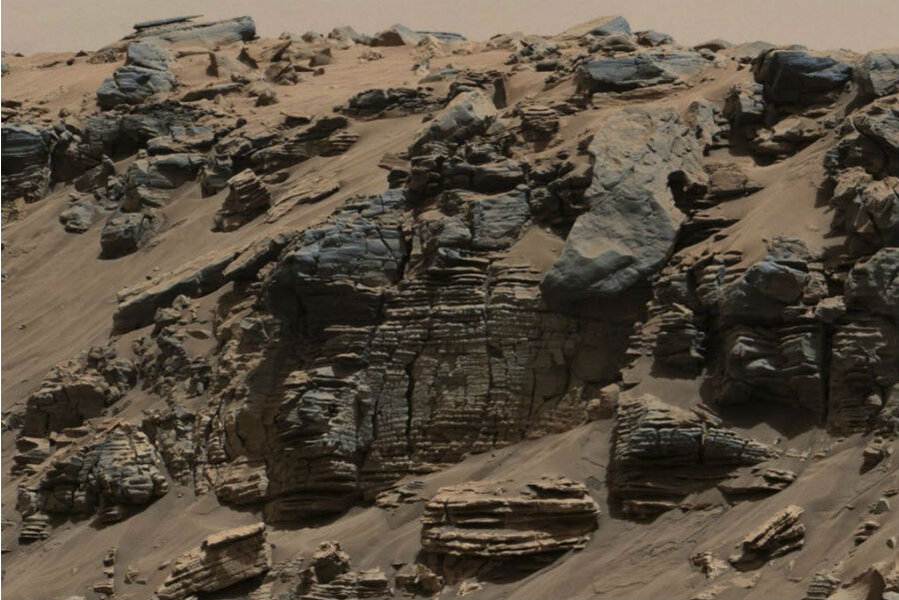Was this gully on Mars carved by water? NASA rover to investigate.
Loading...
The Martian rover Opportunity is making another historic first on the surface of Mars.
The highly successful probe will spend the next two years exploring a Martian gully that scientists suspect may have been carved out by an ancient water source. The mission is the latest challenge for the aging rover, which was originally intended to function for three months and is now in its 13th year.
Data gathered by Opportunity and similar rovers have shaped an ever-greater understanding of Mars. As NASA, Boeing, and SpaceX all set their sights on human missions to Mars in coming decades, they will depend on this data to help them know what to expect when they touch down on an alien planet for the first time.
When Opportunity and its companion rover, Spirit, landed on Mars in 2004, their missions were expected to last only 90 Martian days (about 92.4 Earth days). Both probes far surpassed these estimates, with Spirit finally dying in 2010, and Opportunity still going strong.
With Opportunity's newest mission, NASA hopes to find evidence that liquid water created the gully, located in in the "Bitterroot Valley" portion of the western rim of the Endeavour Crater.
"Fluid-carved gullies on Mars have been seen from orbit since the 1970s, but none had been examined up close on the surface before," said Opportunity principal investigator Steve Squyres of Cornell University in a statement.
"One of the three main objectives of our new mission extension is to investigate this gully. We hope to learn whether the fluid was a debris flow, with lots of rubble lubricated by water, or a flow with mostly water and less other material," he explained.
The mission faces a few hurdles. Opportunity is an old rover, and its now-outdated flash memory for holding data overnight no longer functions properly, meaning that scientists have to beam information to Earth immediately or risk losing it forever. That could be complicated by a threatened global dust storm on the planet as soon as October 29th.
"Once in awhile, several storms will start up at once and they will blow up larger and larger until they basically cover the entire planet," James Shirley, a planetary scientist at NASA’s Jet Propulsion Laboratory, told Pasadena Star-News. "They’re probably the most spectacular weather event that we can see in the solar system. I don’t think there’s really anything like it anywhere else."
The last storm, in 2007, was one of the first major threats to Spirit and Opportunity.
"We had to take special measures to enable their survival for several weeks with little sunlight to keep them powered," recalled John Callas, project manager for Spirit and Opportunity, in a statement. "Each rover powered up only a few minutes each day, enough to warm them up, then shut down to the next day without even communicating with Earth. For many days during the worst of the storm, the rovers were completely on their own."
If the global dust storm does occur, the aging Opportunity might have trouble continuing its mission. But NASA is confident enough in the probe to approve the mission extension that will take the rover all the way to the bottom of the 14-mile-wide Endeavor Crater.
"We have now exceeded the prime-mission duration [of Opportunity] by a factor of 50," said Opportunity project manager John Callas of NASA's Jet Propulsion Laboratory in a statement. "Milestones like this are reminders of the historic achievements made possible by the dedicated people entrusted to build and operate this national asset for exploring Mars."








